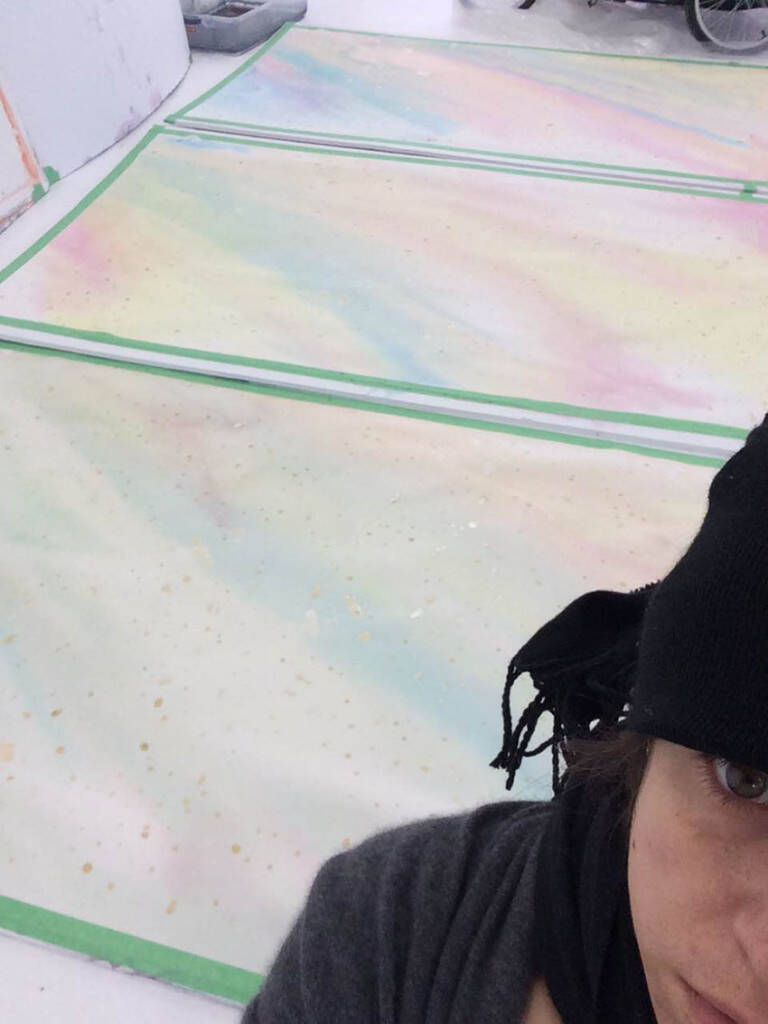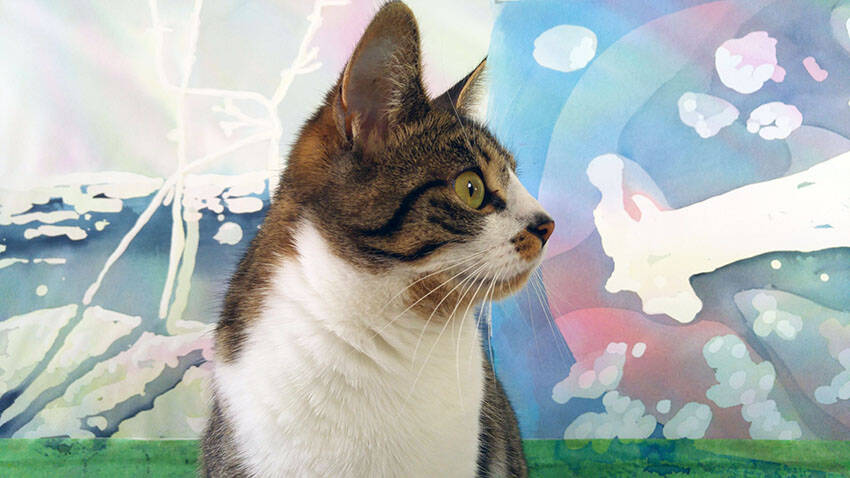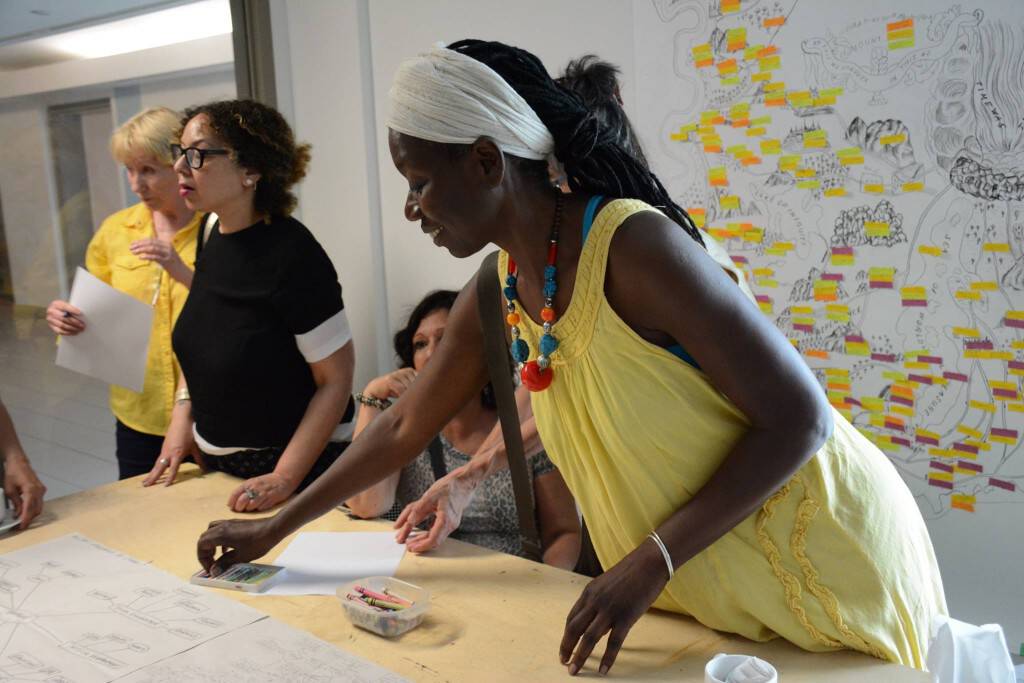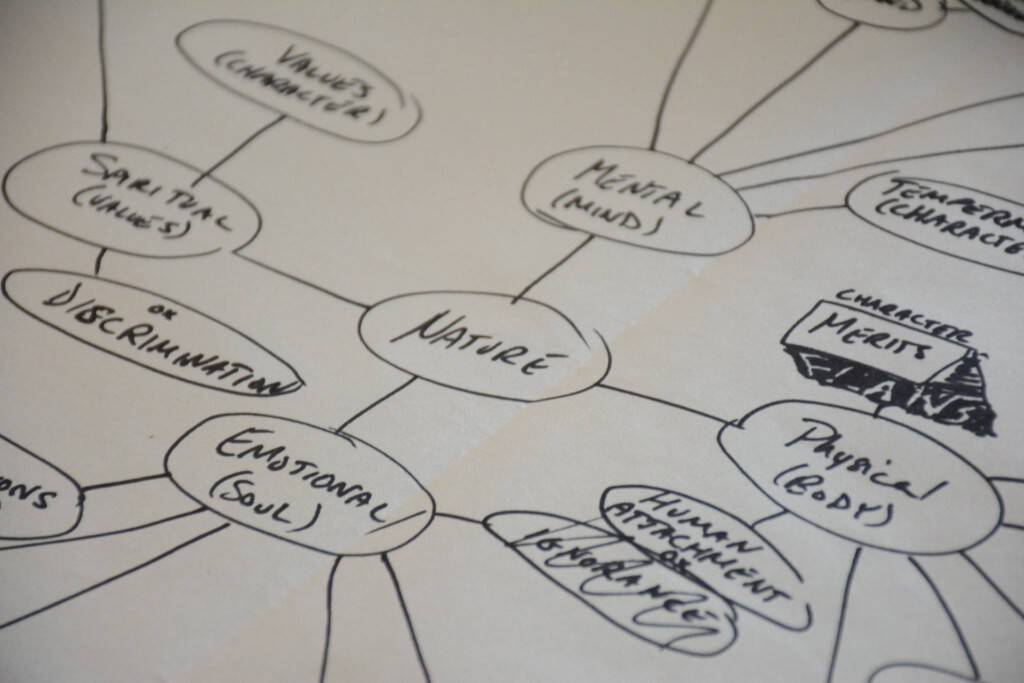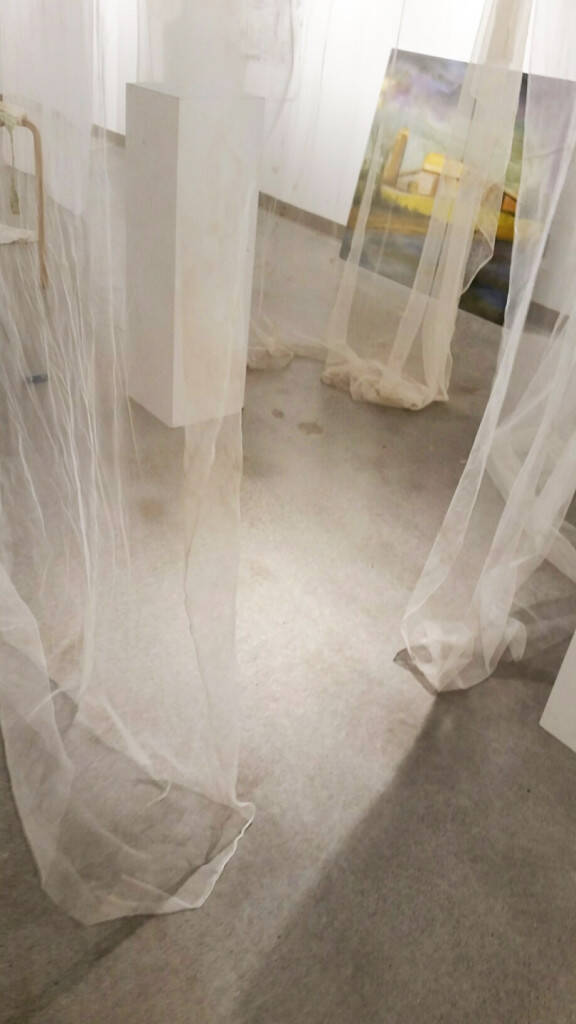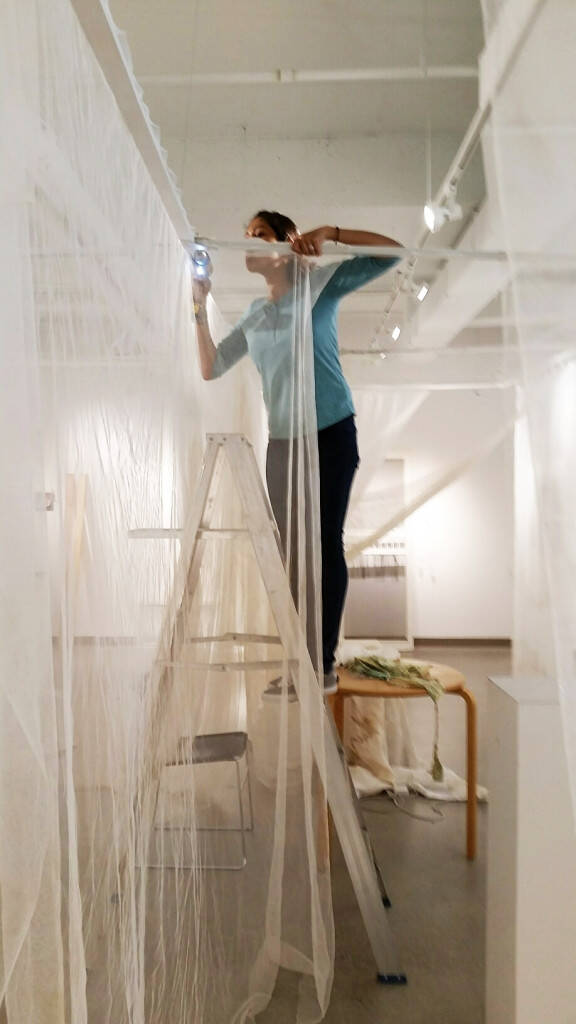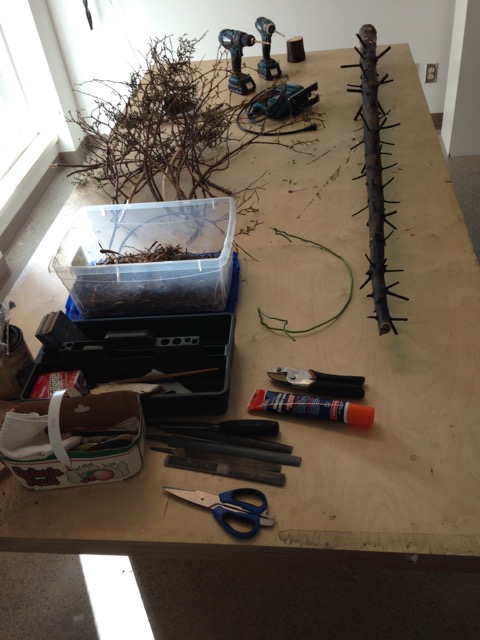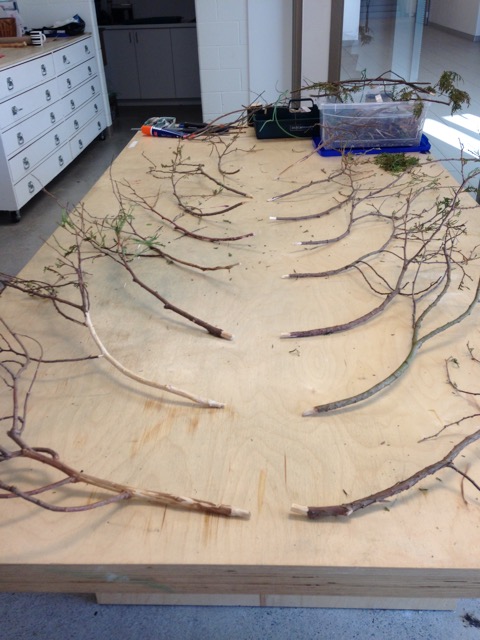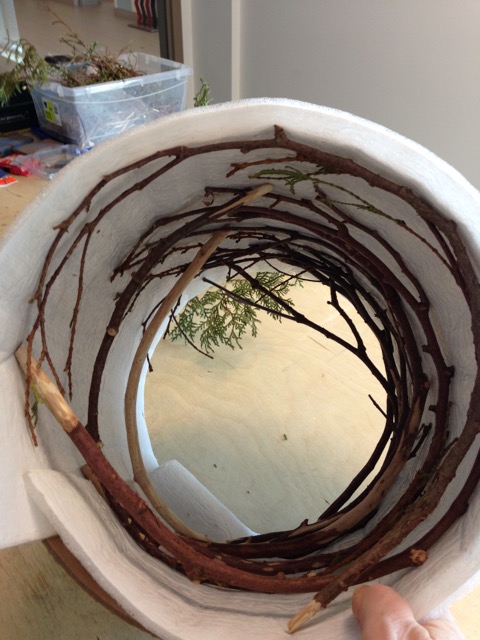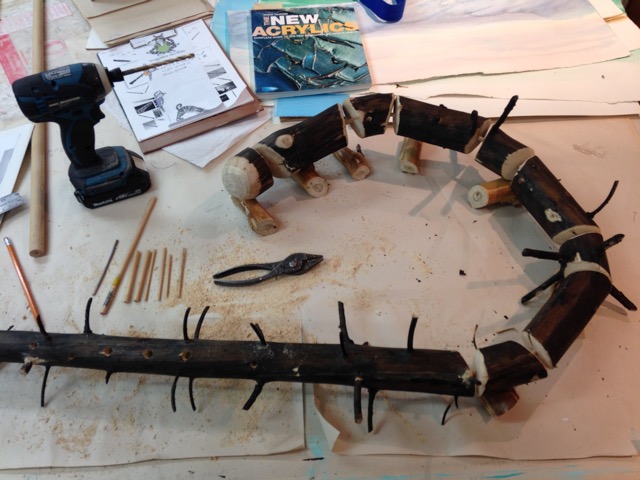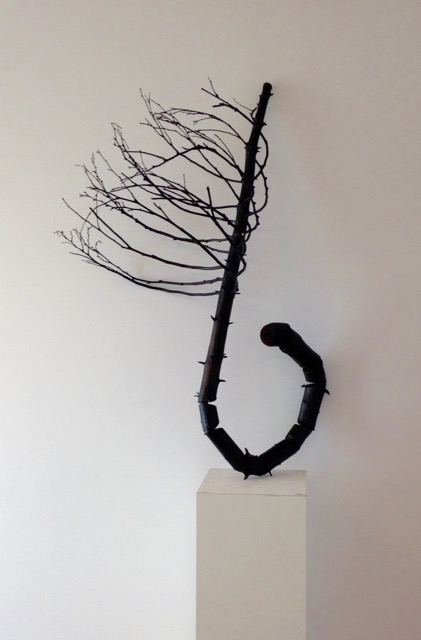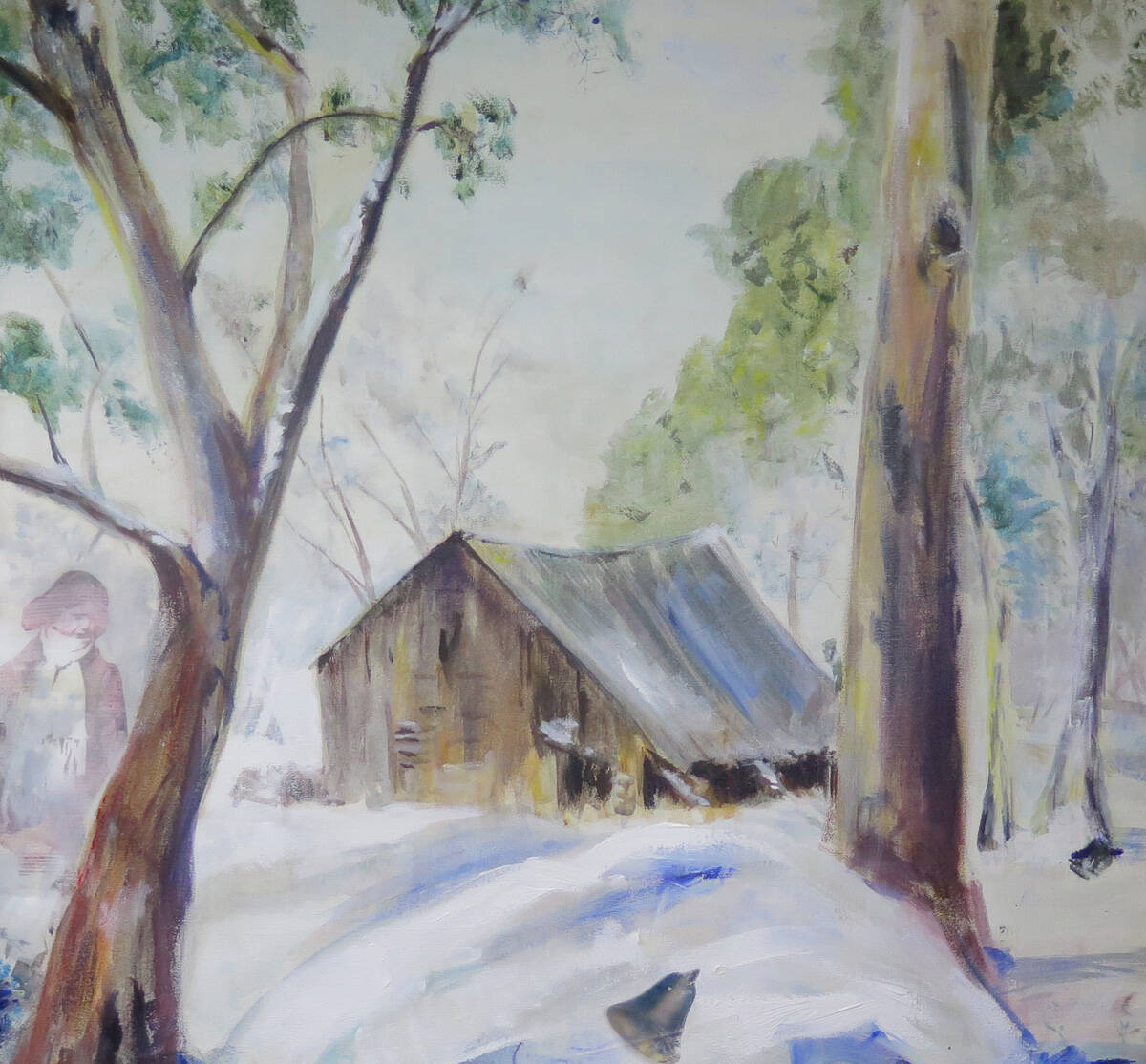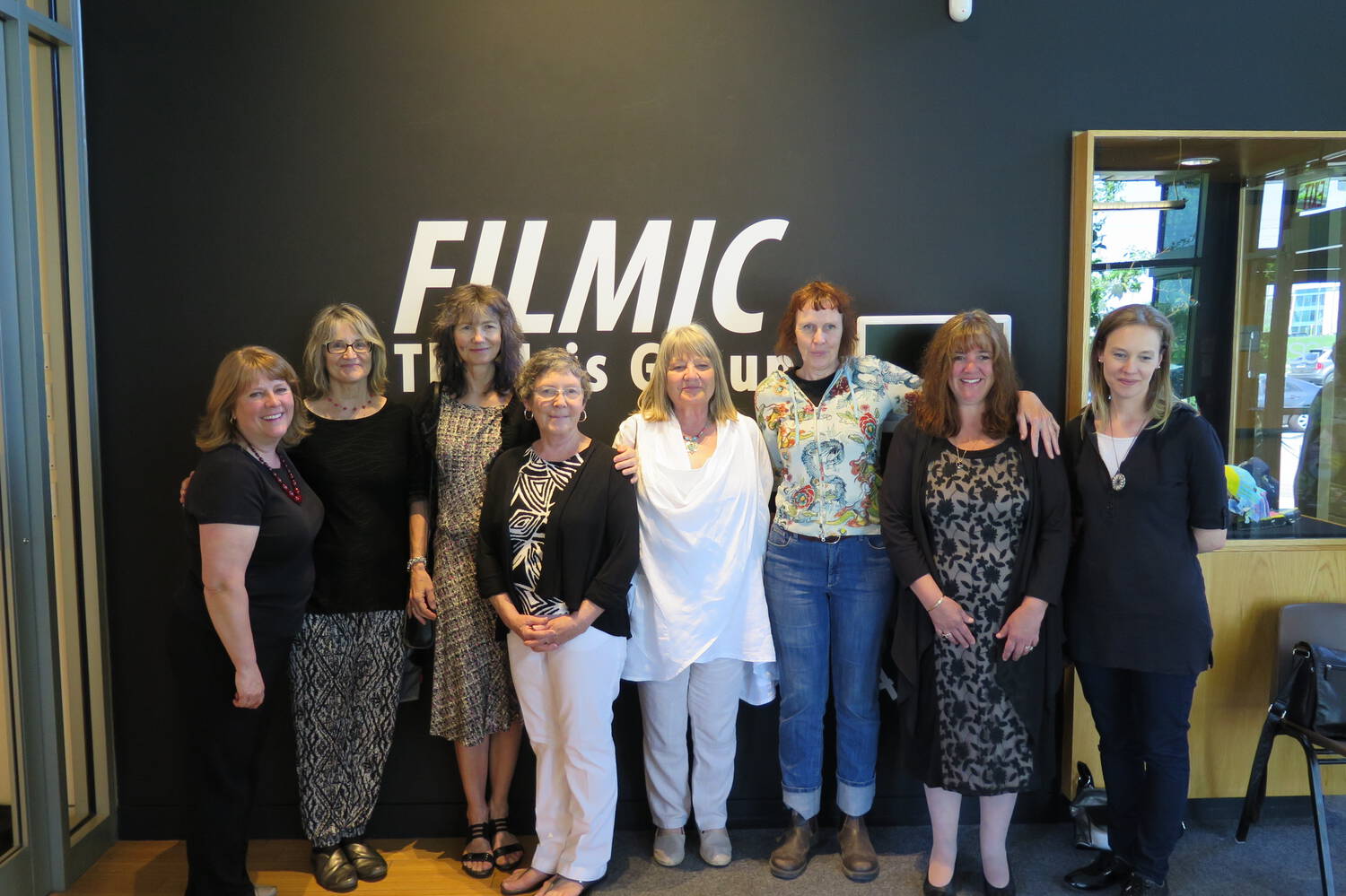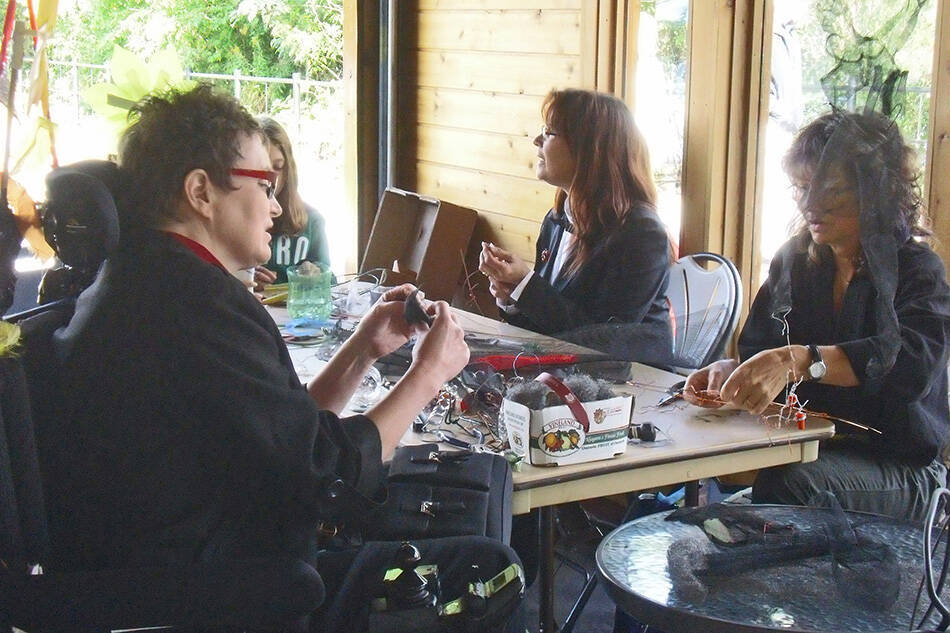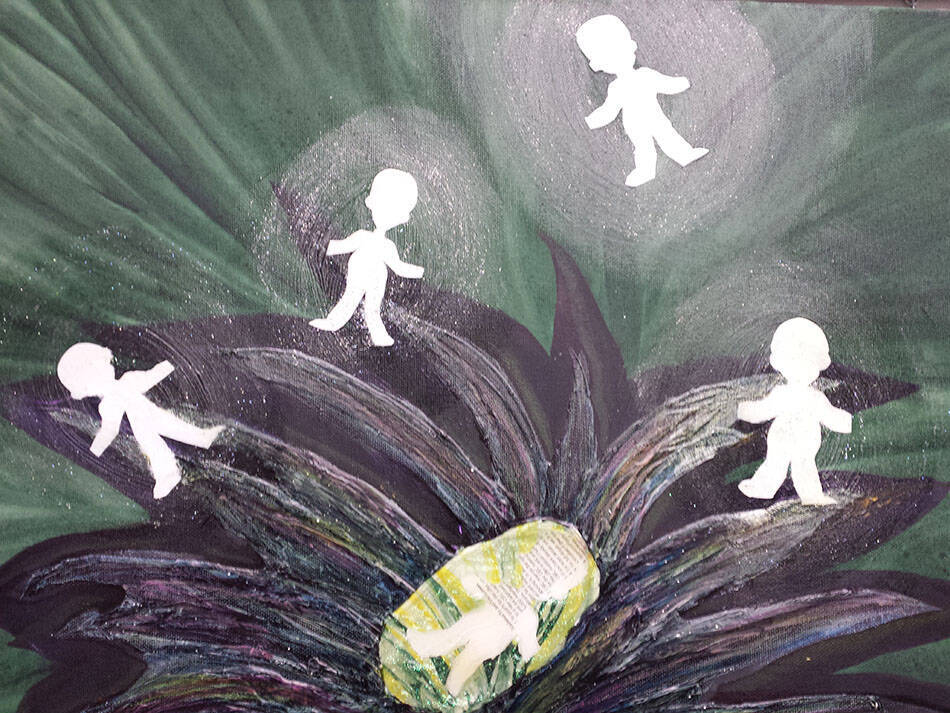Laura Madera ‘s exhibition in Gallery A “The Angle of the Sun’s Rays” runs until July 24. We caught up with Laura to ask her a few questions about her exhibition and practice.
The RMG: Hi Laura. Please tell us a little about yourself.
Laura Madera: I was born in Ajax Ontario and grew up in the pavement dominated suburbs of Toronto. Growing up I spent a lot of time seeking out wilder natural places within the city. We lived close to the Don Valley and I would explore that beautiful, stinky, overgrown, (then) polluted area with friends and family any chance I got. It’s abandoned orchards, mills and woods had an affect on my imagination and ways of negotiating the world. I still draw on some of those experiences today.
In my adulthood I’ve had an itinerant life – moving almost every year. Often ping ponging back and forth from British Columbia to Ontario. Until three years ago, when I settled in Peterborough to paint full time.
In terms of artmaking, I’m an oddball watercolourist. I have bachelors and masters degrees in fine art and mix that critical head space with engaging directly with experiences, both in the natural world and with the material qualities of watercolour in the studio.
RMG: Please tell us more about your exhibition in Gallery A.
LM: In this exhibition I use painting to poetically explore the natural world, it’s primal energies, and to approximate something of the wonder of it. I was curious what it would be like to make work from a place of interconnectedness – as a way to embody the creaturely aspects of living in a place. I wanted to paint not from a position of masterful dominance and control, but from a conversational, reciprocal position. I spent much time listening to my materials in the studio. Water, pigment, air, latex, gravity became valuable collaborators for creating diverse forms, qualities and meaning. The result is a kind of painted document of the negotiation and flows of my imagination and body with the body of work.
RMG: Why did you apply to exhibit in Gallery A?
LM: Gallery A supports the exhibition of new and experimental work. This exhibition is the culmination of a project grant from the Ontario Arts Council to push my practice into the scale of history painting. This scale is new territory for me. Gallery A seemed like a great place to mount the work.
RMG: What inspires you? Is there a particular artist’s work that has influenced your practice?
LM: Direct experiences with light, water, weather, plants, soil, rock, natural processes and the qualities of watercolour. Poetry. Thinkers such as Wendell Berry and Ursula K Le Guin. Artists Georgia OKeefe, Charles Burchfield, Bill Jensen, Anne Truitt, Landon MacKenzie. Anyone who is curious about the world and open. Love. Vulnerability.
RMG: Why watercolor?
LM: Watercolour lends itself to conversation. It’s unruly, tenacious, run run running quality is a force to invite and reckon with. It’s transparent and works with available environmental light to create colour by refracting and reflecting it back through layers of pigment. In this way it is sensitive to its environment. It’s transformative, much more than oil paint, in that it’s main ingredient needs to transform into thin air in order for the painting to be made. I could go on and on. But for these qualities and others I feel it suits my project of being with and exploring natural phenomenon. It’s as much a letting go as a building up in the studio. I’d like to think my choice of watercolour as a gesture that creates another layer of content in the work.
RMG: What do you hope visitors will feel when they visit your exhibition?
LM: If there is one thing I’ve come to understand about exhibiting art is that I can’t hope for a particular response. I enjoy the varied responses that occur. But if I were to hope for something it is that people take this exhibition as an opportunity to slow down, to stop, to look and feel whatever comes.
